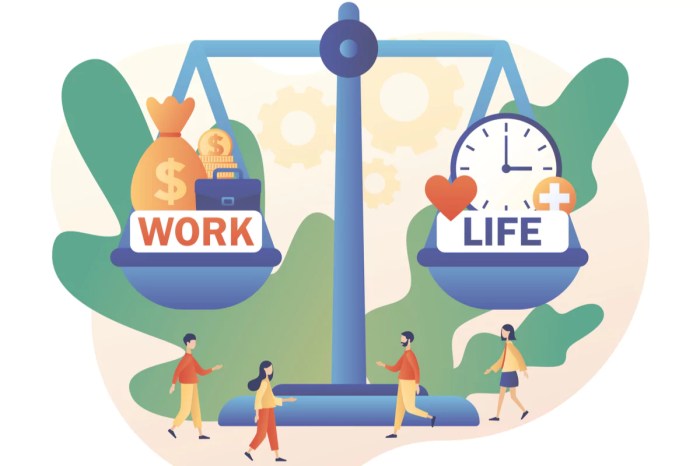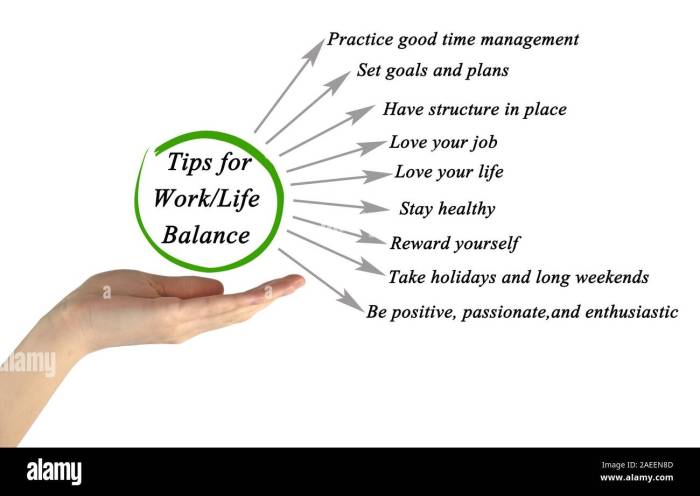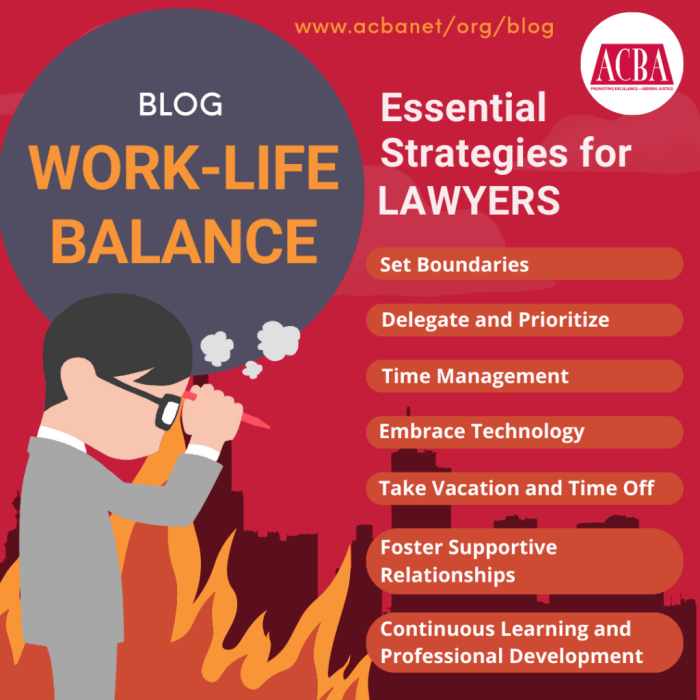Embark on a journey towards achieving work-life balance in just 30 days with our comprehensive guide. Discover the secrets to managing your time effectively and prioritizing self-care.
Strategies for Achieving Work-Life Balance

Setting boundaries between work and personal life is crucial for maintaining a healthy balance. When you establish clear limits, you can prevent work from creeping into your personal time and vice versa. This separation allows you to be fully present and focused on each aspect of your life without feeling overwhelmed.
Importance of Setting Boundaries
- Define specific work hours and stick to them to avoid overworking.
- Avoid checking work emails or messages outside of designated work time.
- Create a dedicated workspace at home to differentiate between work and relaxation areas.
Prioritizing Tasks for Effective Time Management
- Make a to-do list at the beginning of each day to prioritize tasks based on urgency and importance.
- Break down larger projects into smaller, manageable tasks to avoid feeling overwhelmed.
- Delegate tasks when possible to lighten your workload and focus on high-priority responsibilities.
Benefits of Regular Breaks and Relaxation Techniques
- Take short breaks throughout the day to recharge and prevent burnout.
- Incorporate relaxation techniques such as deep breathing, meditation, or exercise to reduce stress levels.
- Schedule time for hobbies and activities you enjoy to unwind and rejuvenate outside of work hours.
Creating a Realistic Work-Life Balance Plan

When creating a realistic work-life balance plan, it is essential to evaluate your current commitments and responsibilities to identify areas for improvement. This involves taking a close look at how you currently allocate your time and energy between work and personal life.
Setting SMART Goals
Setting SMART (Specific, Measurable, Achievable, Relevant, Time-bound) goals is crucial for achieving a balanced lifestyle within 30 days. Here are some examples of setting SMART goals:
- Specific: Instead of saying “I want to spend more time with my family,” set a specific goal like “I will have dinner with my family at least four times a week.”
- Measurable: Set goals that you can track progress on, such as “I will exercise for 30 minutes three times a week.”
- Achievable: Ensure that your goals are realistic and attainable within the given timeframe.
- Relevant: Make sure your goals align with your priorities and values.
- Time-bound: Set a deadline for each goal to create a sense of urgency.
Delegating Tasks and Seeking Support
Delegating tasks and seeking support from colleagues or family members is key to maintaining a work-life balance. By sharing responsibilities with others, you can free up time for activities that are important to you. Here are some ways to effectively delegate tasks:
- Identify tasks that can be delegated without compromising quality.
- Communicate clearly with the person you are delegating to, providing necessary information and expectations.
- Trust the individual to complete the task and offer support if needed.
Building Healthy Habits for Sustainable Work-Life Balance

Maintaining a healthy work-life balance requires building healthy habits that support overall well-being. This includes focusing on areas such as diet, exercise, sleep, mindfulness, stress management, hobbies, social activities, and self-care.
The Benefits of Maintaining a Healthy Diet, Regular Exercise, and Sufficient Sleep
Ensuring a balanced diet, regular exercise, and sufficient sleep provide numerous benefits for both physical and mental health. A healthy diet fuels your body and mind, regular exercise boosts energy levels and improves mood, while sufficient sleep supports cognitive function and overall well-being.
Strategies for Incorporating Mindfulness Practices and Stress Management Techniques
Integrating mindfulness practices such as meditation, deep breathing exercises, or yoga can help reduce stress levels and increase focus. Stress management techniques like time management, setting boundaries, and prioritizing tasks can also contribute to a more balanced work-life routine.
The Importance of Setting Aside Time for Hobbies, Social Activities, and Self-Care
Engaging in hobbies, spending time with loved ones, and practicing self-care are essential for preventing burnout and maintaining a sense of fulfillment outside of work. These activities provide opportunities for relaxation, creativity, and personal growth, ultimately contributing to a more sustainable work-life balance.
Final Conclusion

Take charge of your life and create a harmonious balance between work and personal well-being by following the strategies Artikeld in this guide. Start your transformation today!